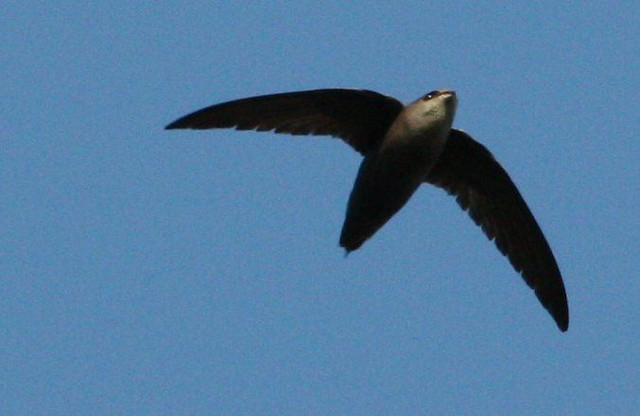THE JET SET


 Every chimney swift would be a platinum-status frequent flyer if they weren’t all pilots themselves. Their cigar-shaped fuselage and narrow, curved wings are built for speed and acrobatic maneuverability, so you won’t find them shuffling through airport security headed for the first-class lounge. Commercial flights are so… pedestrian. Anyway, these birds are rarely ever seen standing still. Their Latin family name—Apodidae—means “footless,” and while that’s not strictly true their legs and feet are not their strongest feature. Swifts don’t perch; when forced to land they cling to vertical surfaces, including the walls of those eponymous chimneys.
Every chimney swift would be a platinum-status frequent flyer if they weren’t all pilots themselves. Their cigar-shaped fuselage and narrow, curved wings are built for speed and acrobatic maneuverability, so you won’t find them shuffling through airport security headed for the first-class lounge. Commercial flights are so… pedestrian. Anyway, these birds are rarely ever seen standing still. Their Latin family name—Apodidae—means “footless,” and while that’s not strictly true their legs and feet are not their strongest feature. Swifts don’t perch; when forced to land they cling to vertical surfaces, including the walls of those eponymous chimneys. The local swifts, who had been housekeeping in hollow trees for more generations than anyone could count, saw an opportunity to make a killing in real estate. They seized the day and the rest is history. Now swifts are North America’s summer house guests, albeit usually uninvited and sometimes unwelcome.
The local swifts, who had been housekeeping in hollow trees for more generations than anyone could count, saw an opportunity to make a killing in real estate. They seized the day and the rest is history. Now swifts are North America’s summer house guests, albeit usually uninvited and sometimes unwelcome. There’s a simple solution to live and let live. A thick slab of Styrofoam™ (aka expanded polystyrene) from the local craft store, cut to fit snugly inside the hearth opening, will reduce the chatter to a tolerable decibel level. Just remember, their parents are scouring the skies above your humble abode for mosquitoes, making summer evenings outdoors much more pleasant. Plus, it only takes 2-3 weeks for the youngsters to progress from hatchling to flying away, which is pretty impressive you have to admit.
There’s a simple solution to live and let live. A thick slab of Styrofoam™ (aka expanded polystyrene) from the local craft store, cut to fit snugly inside the hearth opening, will reduce the chatter to a tolerable decibel level. Just remember, their parents are scouring the skies above your humble abode for mosquitoes, making summer evenings outdoors much more pleasant. Plus, it only takes 2-3 weeks for the youngsters to progress from hatchling to flying away, which is pretty impressive you have to admit.